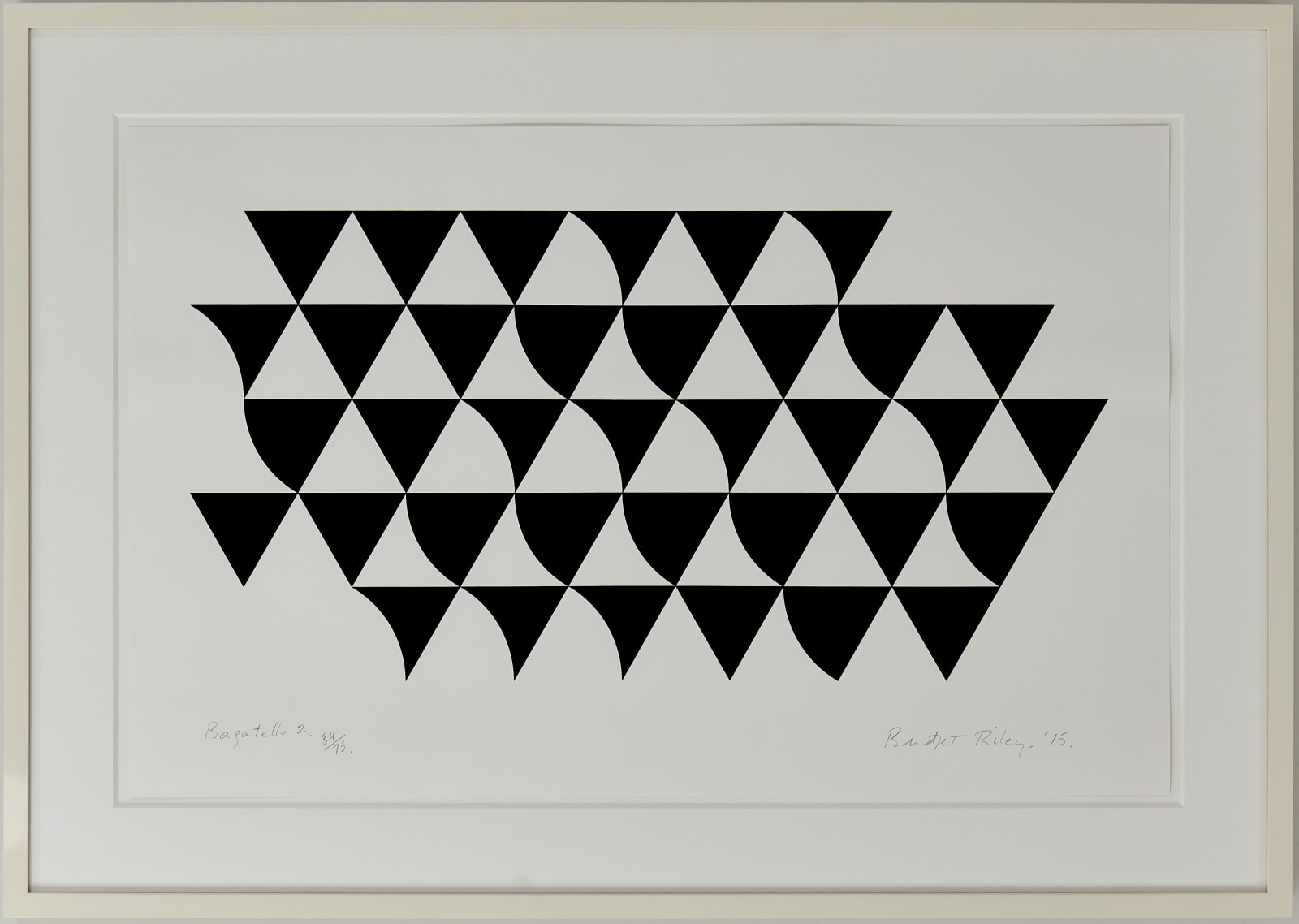Bridget Riley U. K., 1931
Bagatelle 2, 2015
Screen print on paper
Signed by the artist in pencil, lower right on recto
Signed by the artist in pencil, lower right on recto
52 × 82 cm - sheet
© Bridget Riley
Further images
Bridget Riley's Bagatelle series reflects several key influences on her artistic development. These include the Italian Futurists and Victor Vasarely's black-and-white linear designs. Additionally, Riley's childhood experiences in Cornwall, where she...
Bridget Riley's Bagatelle series reflects several key influences on her artistic development. These include the Italian Futurists and Victor Vasarely's black-and-white linear designs. Additionally, Riley's childhood experiences in Cornwall, where she observed the constantly changing seas and skies, contributed to her interest in capturing visual phenomena through abstract means.
The compositions showcase Riley's deep understanding of perception and movement. The geometric patterns are carefully arranged to create an illusion of motion, causing shapes to seem as if they shift and undulate as viewers' eyes travel across the surface. The title "Bagatelle" refers to the French billiards game, with its dynamic visual effects reflecting the unpredictable, player-generated movements of the game.
Riley's non-representational approach in the Bagatelle series exemplifies her artistic philosophy. As she has stated, 'The marks on the canvas are the sole and essential agents in a series of relationships which form the structure of the painting.' The works are not meant to be ends in themselves but serve as mediums through which viewers can have subjective experiences influenced by their perceptions and understanding.
The compositions showcase Riley's deep understanding of perception and movement. The geometric patterns are carefully arranged to create an illusion of motion, causing shapes to seem as if they shift and undulate as viewers' eyes travel across the surface. The title "Bagatelle" refers to the French billiards game, with its dynamic visual effects reflecting the unpredictable, player-generated movements of the game.
Riley's non-representational approach in the Bagatelle series exemplifies her artistic philosophy. As she has stated, 'The marks on the canvas are the sole and essential agents in a series of relationships which form the structure of the painting.' The works are not meant to be ends in themselves but serve as mediums through which viewers can have subjective experiences influenced by their perceptions and understanding.







